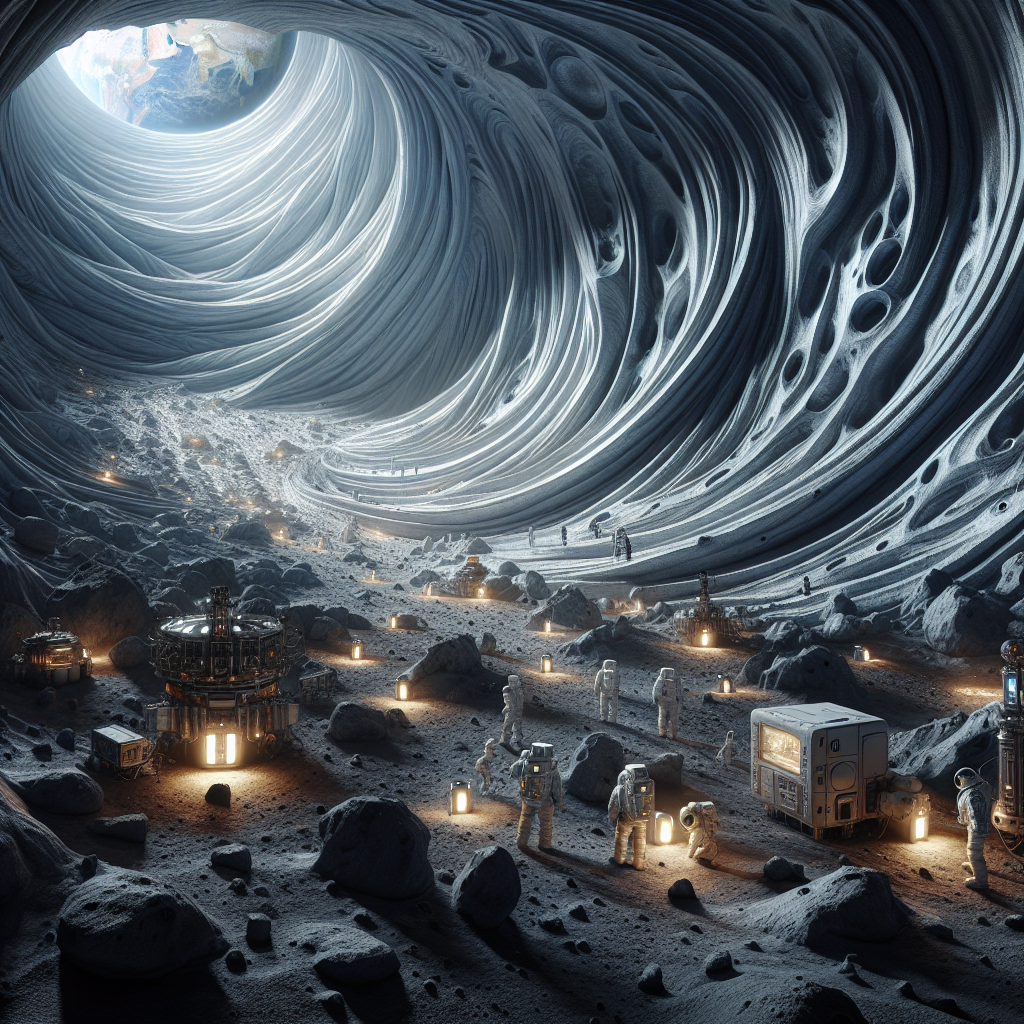Introduction to Lunar Lava Tubes
As humanity sets its sights on longer-duration space missions, the Moon becomes a crucial stepping stone in our extraterrestrial journey. Among the various natural features on the Moon, lunar lava tubes have sparked significant interest as potential sites for future human bases. These sublunar channels, once carriers of molten lava, could provide natural shelters from the harsh conditions of the lunar surface.
Why Consider Lunar Lava Tubes?
The idea of using lunar lava tubes as shelters is not just a result of their intriguing structure but also their potential to offer protection. The Moon’s surface is bombarded by cosmic radiation and micrometeorites, with temperature fluctuations that can be extreme. Lava tubes, being underground, provide a natural barrier against these elements, offering a more stable environment that could be easier to make habitable.
Protection from Cosmic Radiation and Meteorites
Lunar lava tubes, with their thick basaltic walls, can shield inhabitants from cosmic radiation, which is a significant hazard for long-term human space exploration. Similarly, these structures are inherently more resistant to impacts from micrometeorites, which are frequent and potentially catastrophic on the Moon’s surface.
Thermal Stability
One of the critical challenges on the Moon is its extreme temperature variations. The lunar surface experiences temperatures ranging from 127 degrees Celsius during the day to minus 173 degrees at night. Lava tubes, insulated from these extremes, maintain a more constant temperature, potentially reducing the energy required for heating and cooling a lunar base.
Exploration and Research on Lunar Lava Tubes
Recent missions and studies have aimed to map and explore these enigmatic structures. For instance, the SELENE (Kaguya) spacecraft, developed by the Japan Aerospace Exploration Agency (JAXA), has provided valuable data indicating the presence of expansive lava tubes near the lunar poles.
Technologies for Exploration
Exploring lunar lava tubes involves sophisticated technology. Rovers and drones, specifically designed for navigation in confined and dark environments, play a crucial role. These technologies help scientists and engineers understand the structural integrity and environmental conditions within the tubes, essential data for assessing their viability as human habitats.
Challenges and Considerations
While the advantages of lunar lava tubes are compelling, several challenges need addressing. The accessibility of these tubes, their structural stability, and the feasibility of adapting them for human habitation are subjects of ongoing research.
Accessibility and Safety
Accessing a lunar lava tube safely is a significant engineering challenge. Entrances to these tubes, often found through vertical shafts or ‘skylights’, require secure and reliable methods to transport astronauts and equipment safely.
Legal and Ethical Considerations
Establishing bases within lunar lava tubes also brings up legal and ethical considerations. The Outer Space Treaty, which guides space exploration activities, mandates that the Moon and other celestial bodies be used for the benefit of all countries and that exploration be conducted without causing harmful contamination.
Looking Ahead
As international interest in lunar exploration grows, with countries and private entities proposing missions, the development of lunar lava tubes as viable bases could represent a critical step in sustainable extraterrestrial living. Collaborative efforts in technology, law, and environmental management will be essential to realizing the potential of these natural lunar features as safe, long-term habitats for humans.
Conclusion
In conclusion, the exploration and potential habitation of lunar lava tubes offer exciting prospects for the future of human space exploration. These natural structures could provide safe havens for astronauts, supporting longer missions and possibly serving as gateways for deeper space exploration. As research progresses, the dream of establishing a human presence on the Moon becomes increasingly plausible.
The exploration of lunar lava tubes continues to captivate scientists and space enthusiasts alike, paving the way for what could be the next chapter in human space exploration.


